Museo Enzo Ferrari, Modena
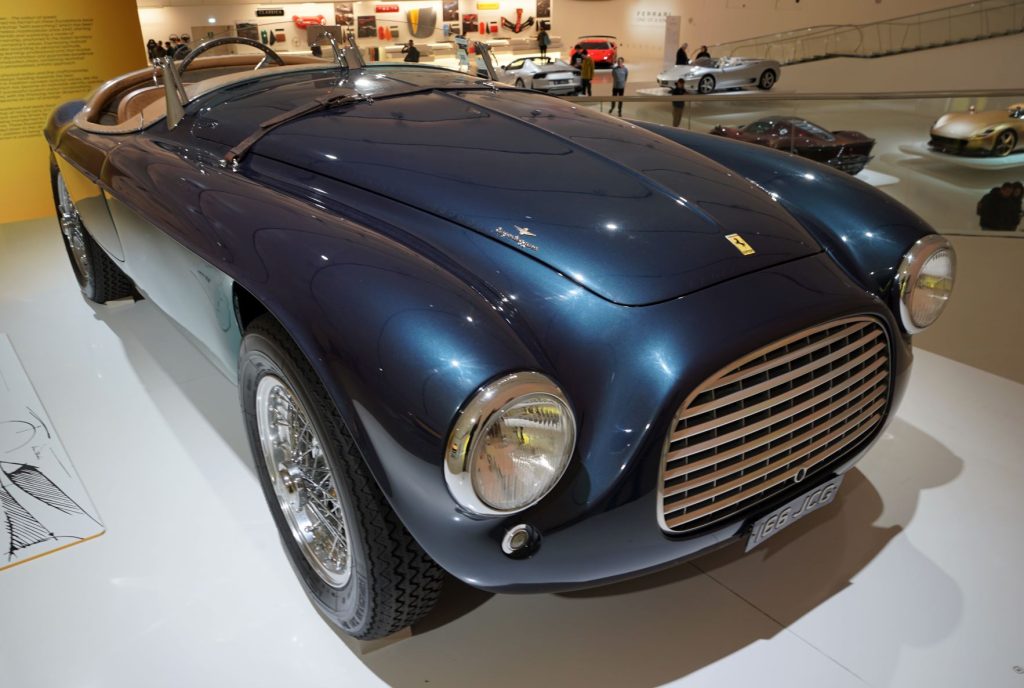
The Emilia Romagna district in Northern Italy punches above its weight when it comes to producing world famous people and things. Got a bottle of balsamic vinegar in the pantry? Parmesan (or Parmigiano-Reggiano as the authentic product is called) in the fridge? Pavarotti CD in the collection? Armani handbag in the cupboard? Well all of these have their origins in this part of Italy. And along with the fancy tucker, the big fella belting out the spine-tingling climax of Puccini’s Nessun dorma, and the bloke who inspired the worldwide mass production of fake clothing and accessories, Emilia Romagna is also world renowned for something else entirely: speed.
You see, Emilia Romagna is home to a disproportionately large number of iconic car and motorcycle manufacturers, whose vehicles are synonymous with high tech engineering, motor racing success, and the phrase ‘if you have to ask, you can’t afford it‘. Keen to immerse myself in a little Italian motoring heritage, I headed to Modena, arguably the heart of Motor Valley.
When it comes to Italian performance marques, they don’t come any bigger than Ferrari. Formula One fans will debate about who is the best constructor of all time, and supercar nuts may quibble over performance data, but when the general public think iconic Italian luxury and speed, they think Ferrari. Modena boasts two Ferrari Museums, one of which includes founder Enzo Ferrari’s birthplace. Museo Enzo Ferrari (also known as Museo Casa Enzo Ferrari) seemed like a good place to start my journey into Motor Valley’s history.
It was a gloomy, drizzly day when I arrived at the big yellow gate to the Museum.
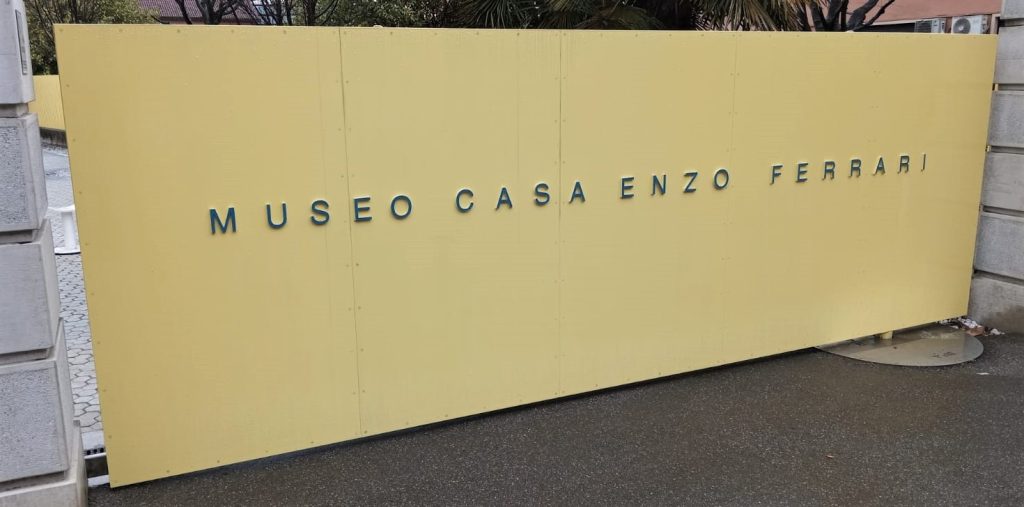
Suitably keen, I had arrived a little early, so stood in the light rain with the other hardcore motorheads until a serious looking security guard opened the gate and let us in.
I hurried through and up the path, coming to a large brick building with a bold sign ‘Officina Meccanica Alfredo Ferrari‘; Enzo’s father’s engineering workshop and upstairs, the family home.
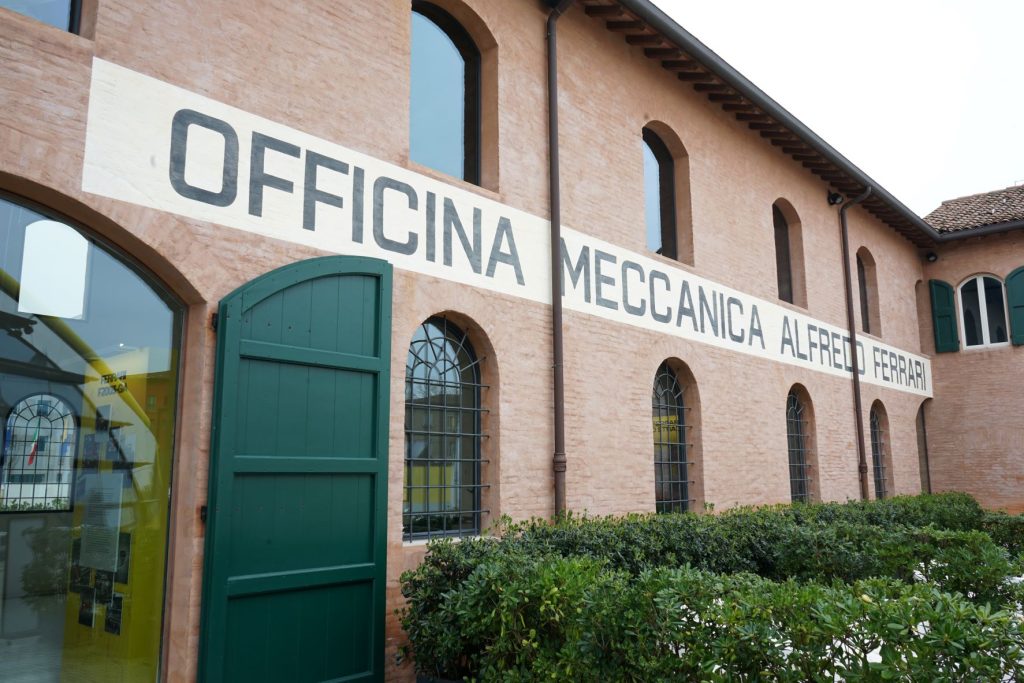
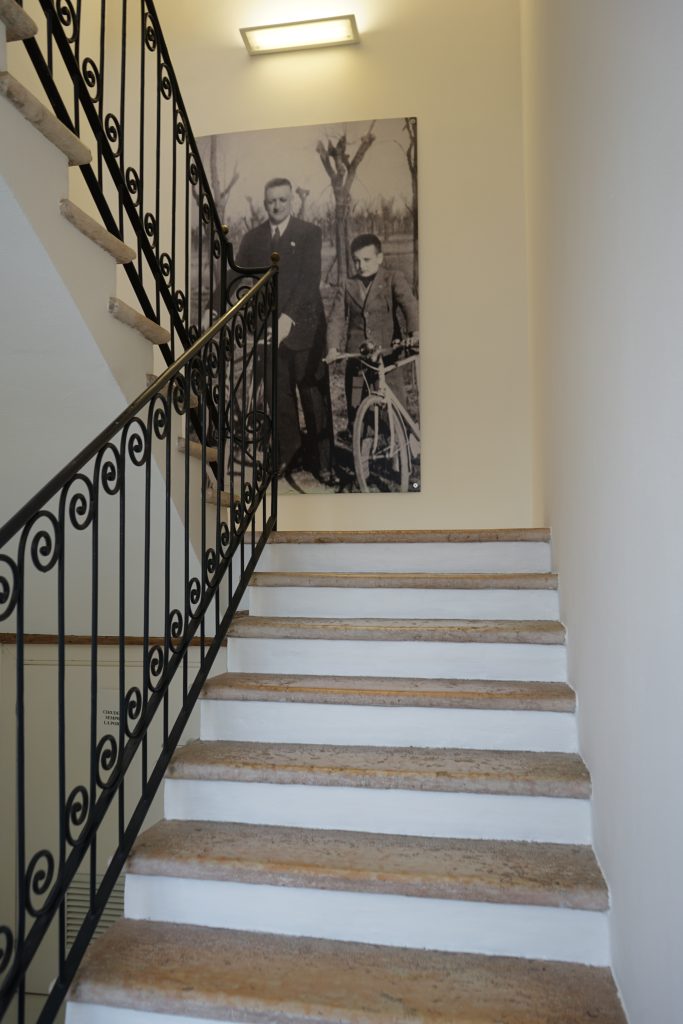
After turning right and ducking into an altogether more modern building for a museum entry ticket, I made my way to the rear of Alfredo’s workshop. Just inside the door, a staircase lead up to the Ferrari home, where Enzo was born in 1898. According to the Museum: ‘Enzo often recalled the staircase as the path that lead him into the magic kingdom of the automobile‘.
The photo on the landing is of Enzo and his son Dino
The Ferrari family residence is not open to visitors, but the downstairs rooms provide information and displays about the man and the marque. To be honest, the presentation of Enzo’s personal story is a little scant; just a dot point chronology and a series of photos.
Even as a young man, Enzo cut a serious figure
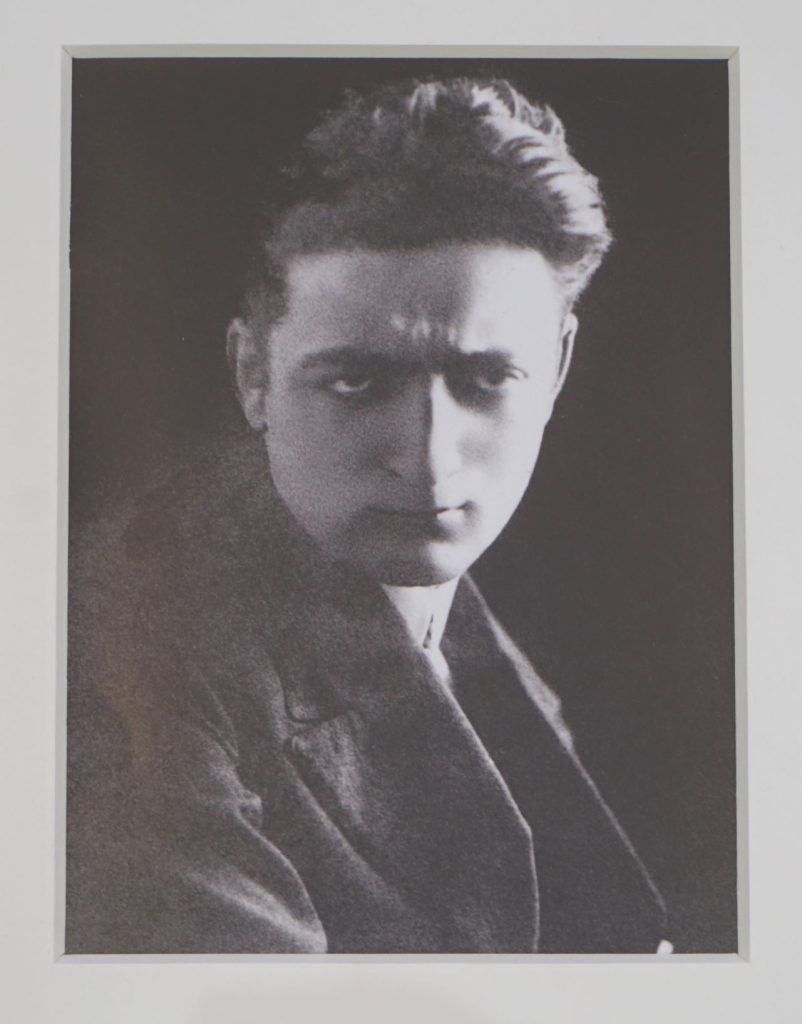
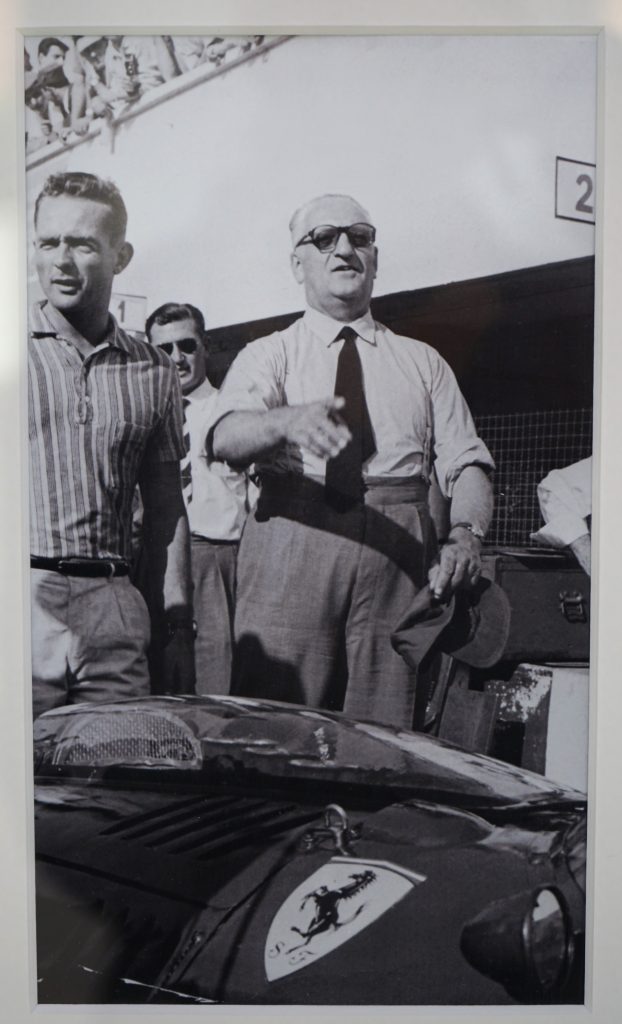
I also felt the museum lacked a logical progression through the great man’s life and work. After working my way through the exhibits, the founder of Ferrari still felt like a distant, private figure. And perhaps he was.
‘Just get in the bloody thing, drive it like a hire car and win the bloody race. And if you don’t, don’t bother coming in on Monday.’
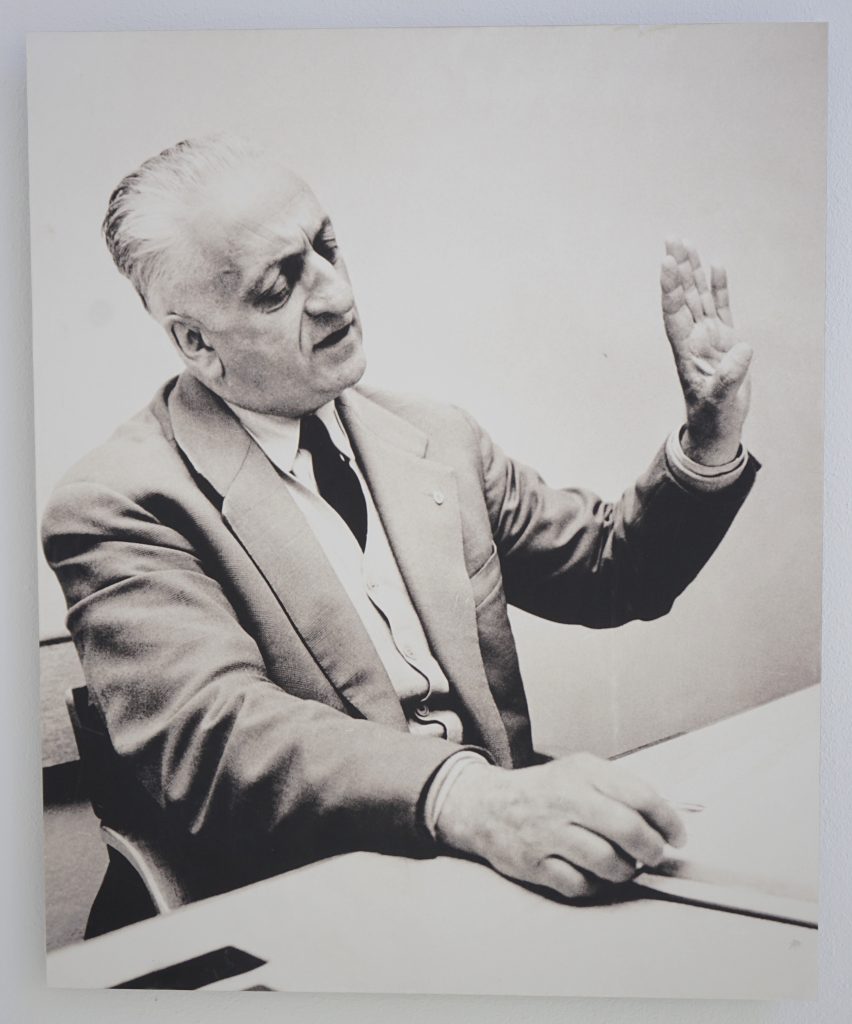
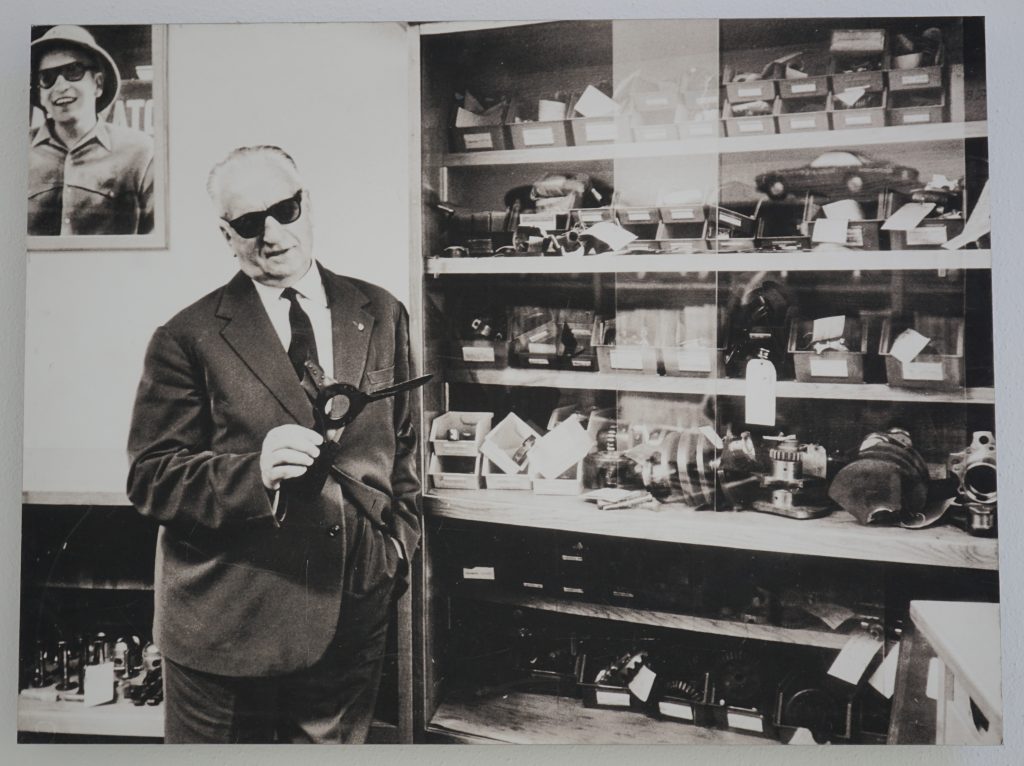
Part of the display included the story of how the prancing horse was adopted as the emblem of Ferrari.
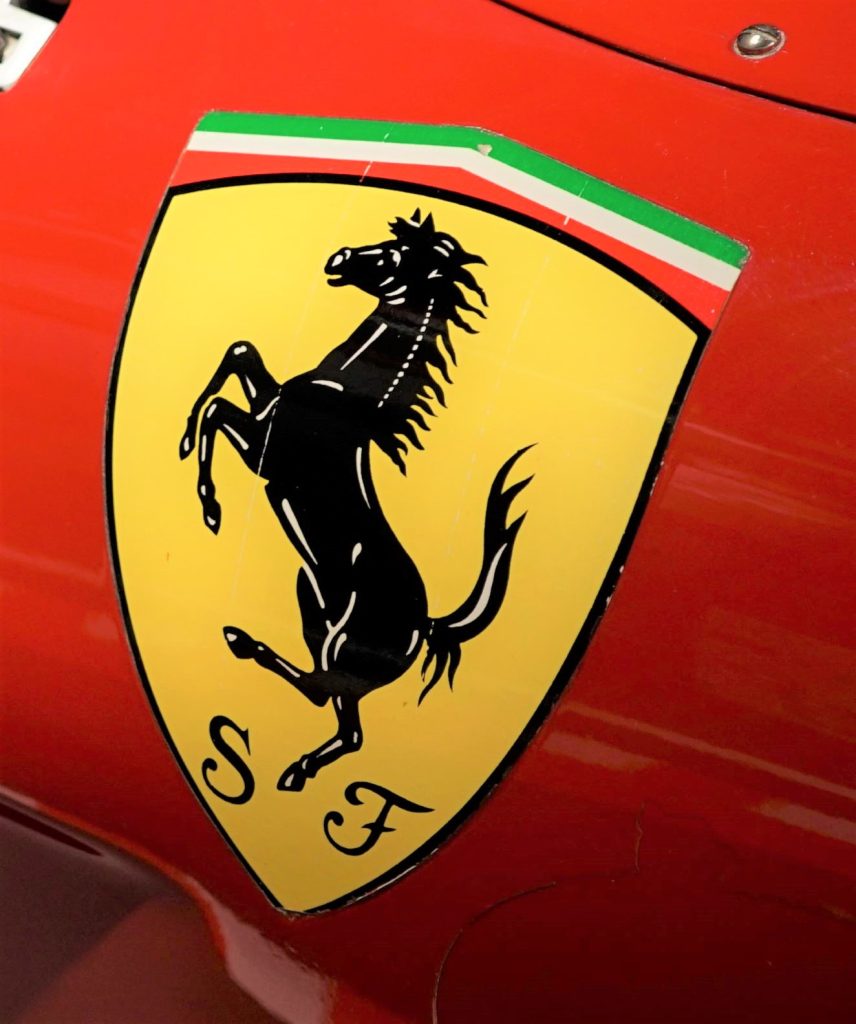
Aviator Francesco Baracca, Italy’s top WWI fighter ace, carried the motif on his aircraft. Francesco’s father Enrico met Enzo after he was victorious in the Savio Circuit race in 1923, and subsequently his wife Paolina ‘invited Enzo to adopt as a sign of recognition and good luck the Prancing Horse used by her son on his aircraft…’
That’s the famous Prancing Horse, right there.
The rest of the exhibition space in Alfredo’s workshop was taken up by a collection of engines, a few supercars and Ferrari’s 2003 Formula 1 entry.
1947 125 S engine, Ferrari’s first V12
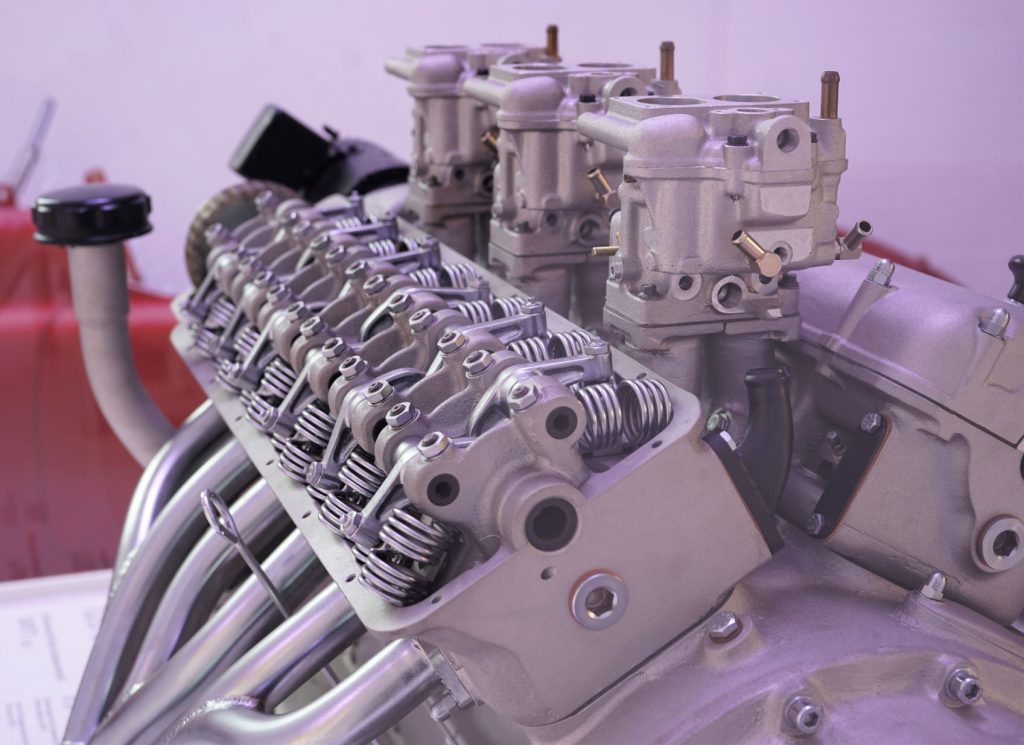
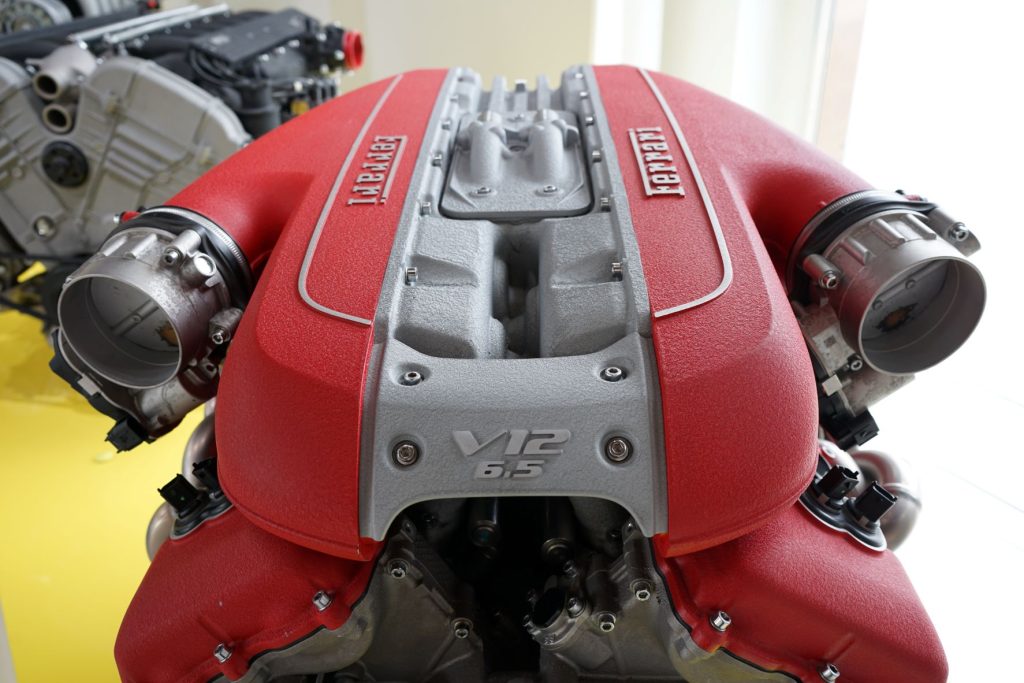
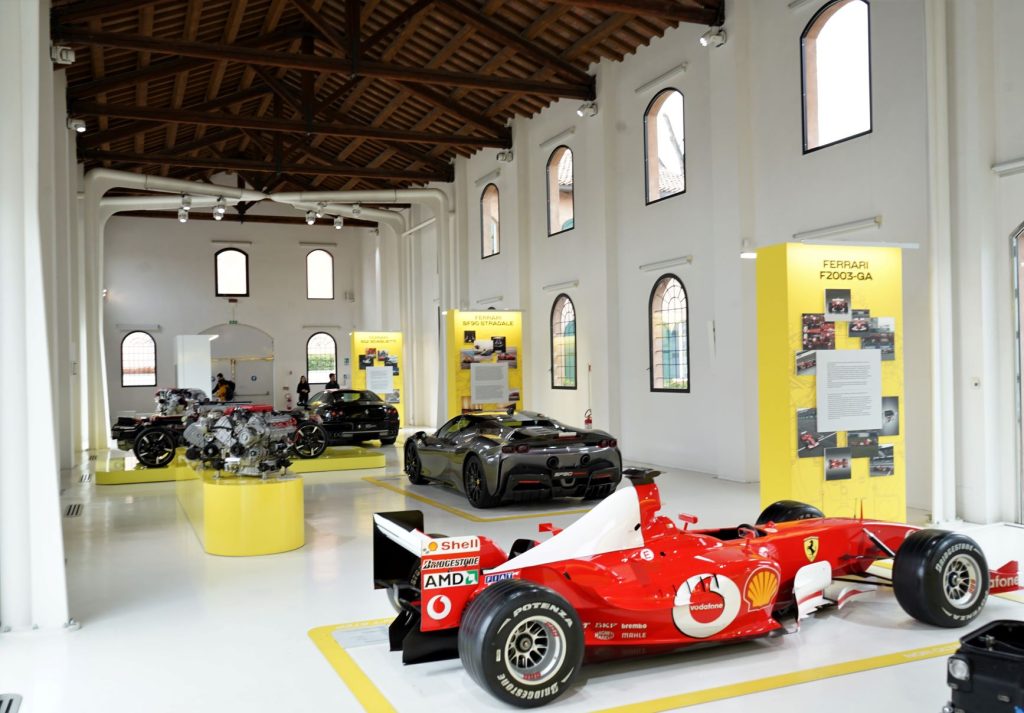
Although interesting, I left Enzo’s birthplace feeling a little unfulfilled.
If only Alfredo could see it now…
What was Enzo like as a boy? What was the mood around the Sunday dinner table at the Ferrari household? What about Enzo’s older brother Alfredo Junior? And Enzo’s mum, who from memory is not mentioned in the Museum at all? I had assumed that the Museo (Casa) Enzo Ferrari would be primarily a personal insight into Enzo Ferrari the man, but this really wasn’t the case.
I went back over to modern building next door, wondering if there was anything more to see. Passing the ticket office, I entered a massive display hall. I felt a bit like I had walked into a supercar dealership’s showroom.

Just beyond the entranceway was a stunning collection of historic Ferraris, both racers and tourers. Although not packed with visitors, there was a steady stream coming through the Museum, so I spent plenty of time waiting impatiently for other punters to get out of my shot.
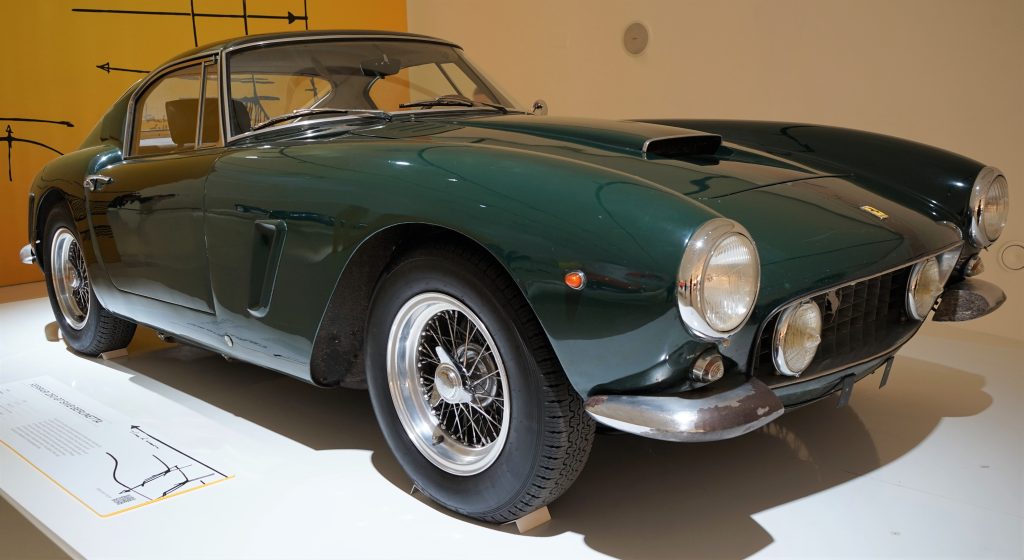
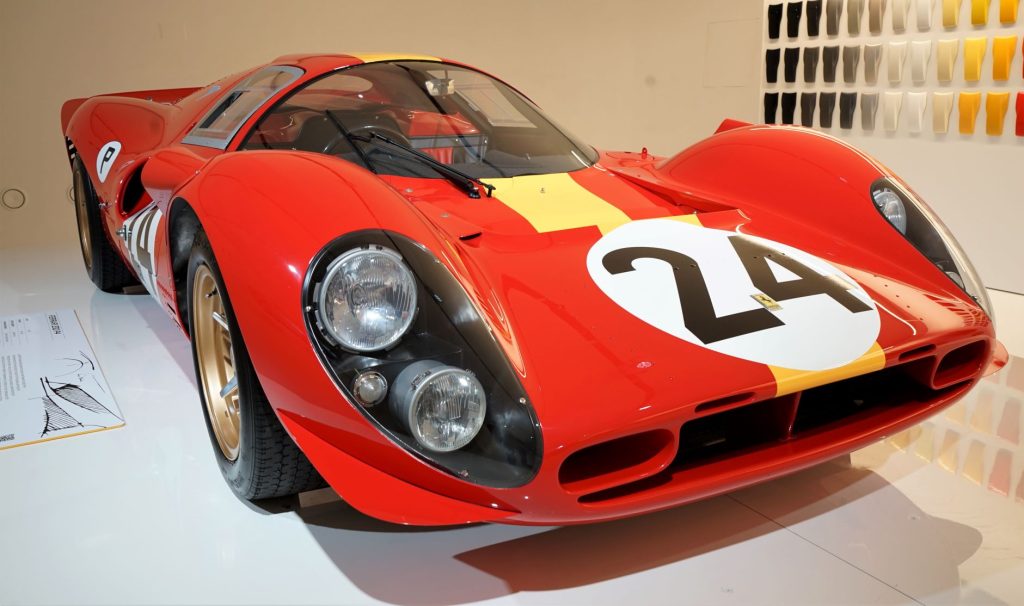
I was just lining up a photo when the lights dimmed, and an operatic soundtrack filled the hangar-like space. A projector illuminated one of the walls, and while Modena’s other favourite son Pavarotti was giving it all he’s got, a photo montage of Enzo appeared. As the final bars of Nessun dorma rose to a crescendo, a caption reading ‘Thankyou Enzo’ lit up, then the music came to a triumphal end, the lights came back on, and I resumed waiting for everyone to move out of the way.
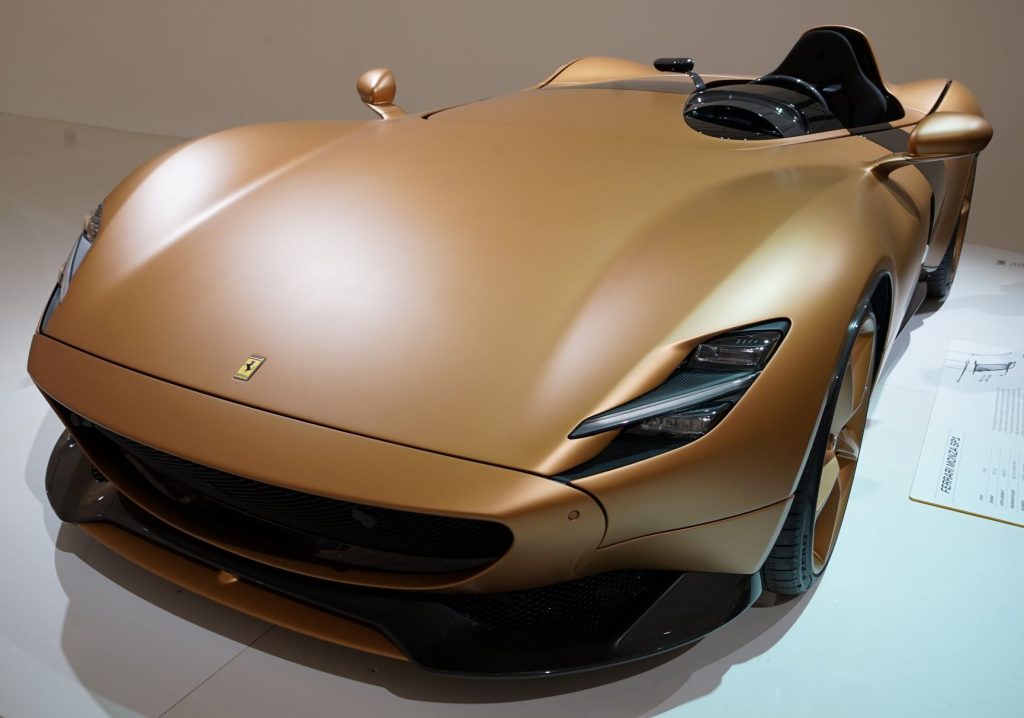
After spending some time with the classics, I went down to the lower floor of the exhibition and checkout out the supercars.
2018 Monza SP1. The perfect choice if you’ve had a barney with the missus/hubby and need some alone time
The exhibition centred on the custom options available to Ferrari buyers, ensuring their car is a one-of-a-kind.
As with all high-performance luxury vehicles, they were awesome, breath-taking, and a little ridiculous all at the same time.
2016 488 Spider. ‘Mate do you have that in red?’
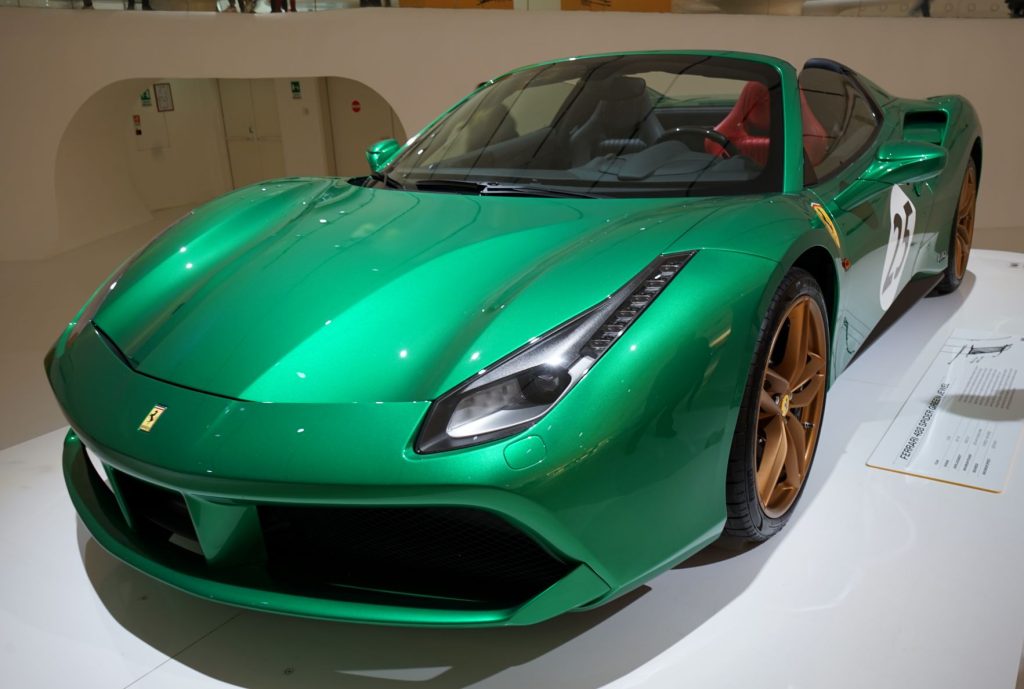
After experiencing another two rounds of the Enzo son et lumiere show, I completed my tour of Museo Enzo Ferrari. Thankfully by the time I emerged the rain had cleared for my walk home.
The Museum hadn’t been what I’d expected, although it was great to see the original Alfredo Ferrari workshop and birthplace of Enzo. Having said that, entry to the Museo Enzo Ferrari isn’t cheap (see below), so if you’d stumped up the cash for a single Museum entry ticket you could well have been a little disappointed with what was presented.
It left me wondering what was in store for me the following day, when I planned to travel the 30 minutes from Modena to the second of the Ferrari museums in Maranello…
A few tips for visiting the Museo Enzo Ferrari
- Like everything associated with Ferrari, entrance to the Museo Enzo Ferrari isn’t cheap. When I visited in 2024, an adult single ticket cost 27 euro (44 AUD) September-May, and 32 euro (52 AUD) June-August. Compare this to the 15 euro (24 AUD) for a ticket to the National Automobile Museum in Turin, Italy, which is a world-class museum featuring over 200 cars.
- You have the option to buy a pass for both Museo Enzo Ferrari (Modena) and Museo Ferrari (Maranello) for 38 euro (62 AUD) September-May, and 42 euro (68 AUD) June-August.
- If you really want to see Enzo’s birthplace and his father’s workshop, then grab a combined pass and make sure you also see Museo Ferrari in Maranello.
- If you are short of time and can only visit one Museum, opt for the Museo Ferrari Maranello. In my opinion, although you won’t see the original Ferrari family home, you will get a better all-round Ferrari experience at the Maranello Museum.
Have you been to the Museo Enzo Ferrari in Modena? Let me know about your experience in the ‘comments’ section below!
Visit the Ferrari Museums website here
If you liked this post, you may also like The Nürburgring, Germany, Hellenic Motor Museum, Greece
See all posts relating to Motoring and Aviation
Leave a Reply